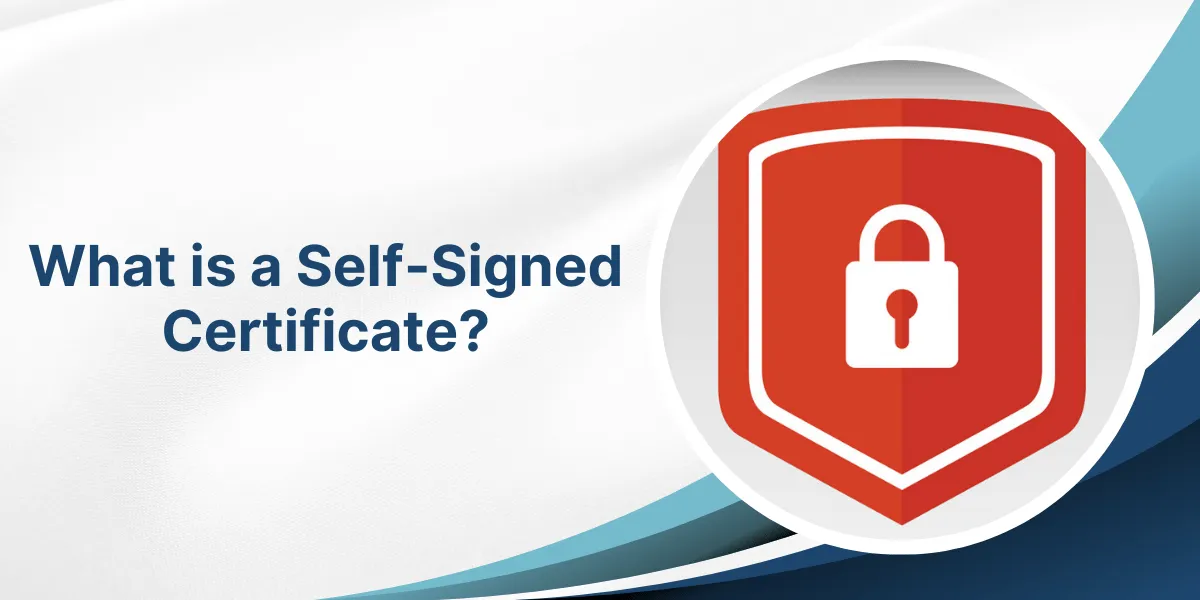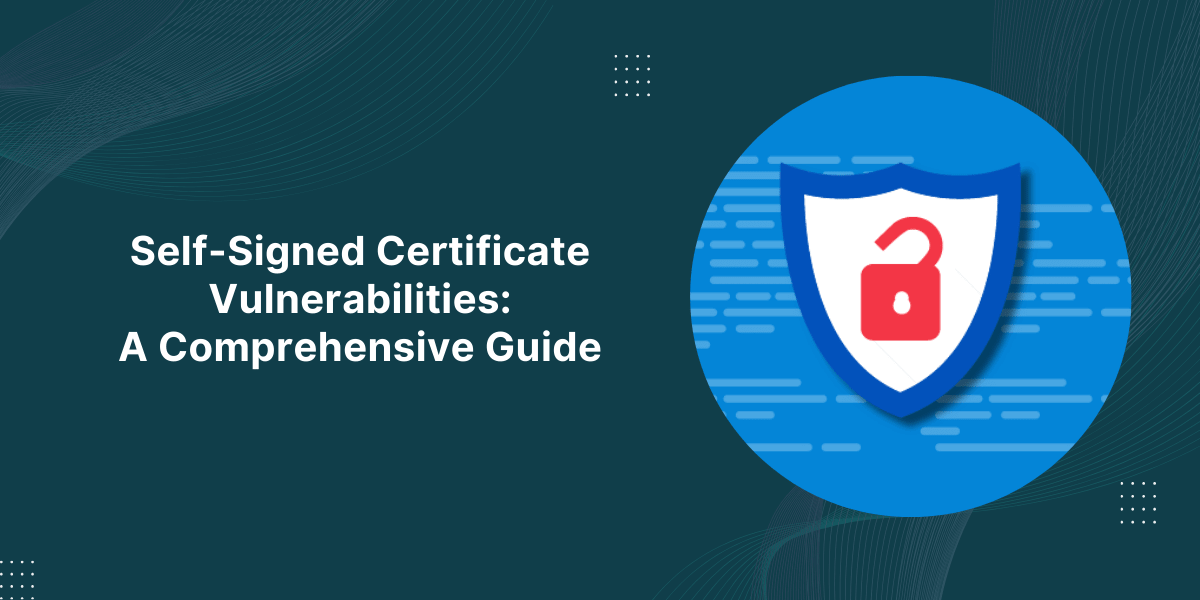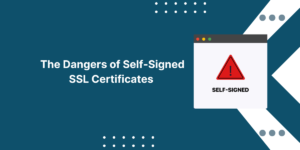Creating Self-Signed SSL in Powershell
A Self-Signed SSL certificate is signed by its creator rather than a CA. It allows you to enable HTTPS on your websites and web services to encrypt traffic. However, because a trusted authority does not sign the certificate, users will see errors indicating that the certificate needs to be trusted. Create Self-Signed SSL Certificate in Powershell is a process that allows you to generate a self-signed certificate using the Windows PowerShell command-line interface.
Self-signed certificates are useful for:
- Testing and development environments where you need HTTPS enabled but do not require trusted certificates.
- Internal websites, services, and tools where you control the clients.
- Internet of Things (IoT) devices that require HTTPS but can’t get public certificates.
This guide will walk you through the steps to generate a self-signed SSL certificate using Powershell on Windows. We will also cover how to export the certificate and private key to install on servers like IIS and Apache.
Key Takeaways
- Self-signed SSL certificates allow you to encrypt traffic to your websites and web services without needing to purchase a certificate from a certificate authority. However, users will see warnings that the certificate is not trusted since it is self-signed.
- The New-SelfSignedCertificate cmdlet in Powershell can generate self-signed certificates easily. You can specify the subject, DNS names, key usage, extended key usage, and more.
- Export the self-signed certificate and private key to a PFX file for installation on your web server. Protect the private key file.
- You can create a self-signed certificate that is valid for an extended period by specifying a far-off “NotAfter” date. However, some browsers may only trust certificates with a shorter validity period.
- Self-signed certificates provide a quick and easy way to implement HTTPS for internal sites and testing. However, for public production sites, you should purchase an SSL certificate from a trusted certificate authority.
Prerequisites
To follow along with this guide, you will need:
- Windows 10 or Windows Server with Powershell 5.1 or later. Any edition, including desktop and server.
- Administrator access to run Powershell commands.
- OpenSSL (if exporting certificate and key).
The drawback is that visitors will see certificate warnings as the certificate is not trusted. Public sites should use CA-signed certificates.
Prerequisites Before Installing Self-Signed Certificate in IIS
To create and install a self-signed certificate for a website in IIS, you need:
- IIS (Internet Information Services) installed on the Windows Server
- Administrative access rights to the server
- Access to IIS Manager console
5 Easy Steps to Create Self-Signed SSL Certificate in PowerShell
- Create Certificate Object in Powershell
- Create an Advanced Self-Signed Certificate
- Export Certificate and Private Key to PFX
- Install Certificate on Web Server
- Trust Certificate
Step 1 – Create Certificate Object in Powershell
Powershell provides an easy way to generate self-signed SSL certificates with the New-SelfSignedCertificate cmdlet.
Run the following in an elevated Powershell session to create a basic cert:
New-SelfSignedCertificate -DnsName "www.example.com" -CertStoreLocation "Cert:\LocalMachine\My"
This will create a self-signed certificate for the site www.example.com and place it in the My certificate store on the local machine.
Let’s break down what’s happening:
- -DnsName “www.example.com” – Specifies the DNS Subject Alternative Name (SAN). This allows using the cert for that domain.
- -CertStoreLocation “Cert:\LocalMachine\My” – Puts the generated cert into the My store under Local Machine rather than the default CurrentUser.
You can also provide these parameters:
- -NotAfter – The expiration date for the cert as a DateTime object.
- -KeyUsage – The key usage flags like DigitalSignature, KeyEncipherment, etc.
- -Type – The certificate type is typically SSLServerAuthentication.
This generates a basic cert, but we can provide additional options for a more robust self-signed certificate next.
Step 2 – Create an Advanced Self-Signed Certificate
Specify additional parameters, such as subject, key usage, extended key usage, and more, to create a more complete self-signed certificate suitable for production use.
For example:
$today = Get-Date
$after = $today.AddYears(10)
$certificate = New-SelfSignedCertificate -DnsName "www.example.com", "example.com" -CertStoreLocation "Cert:\LocalMachine\My" `
-KeySpec "KeyExchange" -KeyUsage "DigitalSignature," "KeyEncipherment" `
-Type "SSLServerAuthentication" -NotAfter $after `
-Subject "CN=www.example.com, OU=IT, O=My Company Name, L=City, S=State, C=Country" `
-Provider "Microsoft Enhanced RSA and AES Cryptographic Provider" `
-HashAlgorithm "SHA256" -KeyLength 2048
Here’s what each additional parameter does:
- -DnsName – Adds additional DNS names and alternative names. Allows using the cert for multiple domains/subdomains.
- -KeySpec “KeyExchange” – Makes the key usable for key exchange, which is required for SSL/TLS.
- -KeyUsage – Allows the use of certs for digital signatures and key encipherment.
- -Type “SSLServerAuthentication” – Specifies this is an SSL/TLS server certificate.
- -NotAfter – Sets expiration 10 years in the future.
- -Subject – Specifies certificate subject attributes like country, org, etc.
- -Provider – Sets crypto provider; this one support AES.
- -HashAlgorithm “SHA256” – Algorthim to hash and sign the certificate.
- -KeyLength 2048 – Bits in the RSA private key. Higher is more secure.
This creates an advanced certificate with options suitable for production use.
Step 3 – Export Certificate and Private Key to PFX
The self-signed certificate is stored in the local machine personal certificate store. To use it on a web server like IIS or Apache, you need to export the certificate and private key.
The most common format is PFX, which combines the private key and certificate chain into a single encrypted file.
First, copy the cert thumbprint, then export it along with the private key:
$cert = Get-ChildItem -Path "Cert:\LocalMachine\My\" -DnsName "www.example.com"
$thumb = $cert.Thumbprint
Export-PfxCertificate -Cert "Cert:\LocalMachine\My\$thumb" -FilePath "C:\cert\examplecert.pfx" -Password $pwd
This exports the certificate + private key to examplecert.pfx protected with the password stored in $pwd.
Keep this PFX file and password safe! It contains the private key that allows the decryption of all traffic secured with the certificate.
You can now import this PFX file into your web server, such as IIS, Apache, Nginx, etc.
Step 4 – Install Certificate on Web Server
To install the self-signed certificate on your web server, follow these general steps:
IIS on Windows
- Open the IIS Manager console.
- Select your website.
- In the Actions pane, open Server Certificates.
- Click Import under the Actions panel on the right.
- Import the PFX file and enter the password.
- Select the imported cert under the SSL certificate bindings.
Apache
- Place the PFX file in a secure folder like /etc/ssl.
- Convert the PFX to a PKCS12 file using OpenSSL command.
openssl pkcs12 -in examplecert.pfx -out examplecert.pkcs12
Set the SSL certificate in your virtual host config.
SSLCertificateFile "/etc/ssl/examplecert.pkcs12"
SSLCertificateKeyFile "/etc/ssl/examplecert.pkcs12"
SSLCertificateChainFile "/etc/ssl/examplecert.pkcs12"
Restart Apache to apply the new certificate.
The steps vary slightly for other servers, but in general, you import the PFX file and then configure the webserver to use it.
Step 5 – Trust Certificate (Optional)
Because the certificate is self-signed rather than signed by a trusted CA, users will see warnings that the cert is not trusted. To avoid this, install the self-signed certificate as a trusted root on any clients.
On Windows, double-click the CER file and install it under Trusted Root Certificate Authorities.
On Linux and macOS, add the CER to /usr/local/share/ca-certificates and update the trust store.
Now, your self-signed cert will be trusted and will not show errors. However, this only works for clients you control. External users will still see untrusted errors.
For public sites, use free or low-cost certificates from CAs like Let’s Encrypt instead for full trust.
Troubleshooting Self-Signed Certificates
Here are some common issues when using self-signed certificates and how to troubleshoot them:
Certificate Warnings in Browser
As covered earlier, self-signed certificates will show warnings in browsers because a trusted certificate authority does not sign them. You will see errors like “NET::ERR_CERT_AUTHORITY_INVALID” in Chrome or “SEC_ERROR_UNKNOWN_ISSUER” in Firefox.
This is expected behavior and can only be resolved by installing the self-signed cert as trusted on client machines, as detailed earlier. Alternatively, you can use a certificate from a public CA.
For local/testing purposes, you can bypass the warnings, but you should never do this for public production websites.
Certificate Name Mismatch
If the name in the self-signed cert does not match the site domain, you will see hostname mismatch errors.
Make sure the -DnsName parameter passed to New-SelfSignedCertificate matches your actual site domain(s).
You can also edit it later using the Set-SelfSignedCertificateDNSName cmdlet if needed.
Invalid Key Usage
Using the certificate for purposes other than what is permitted by the -KeyUsage parameter will result in errors.
For example, if you did not include DigitalSignature usage, the cert cannot be used to sign other certificates or messages.
Make sure to specify the appropriate key usages per the examples earlier when creating the certificate.
Expired Certificate
By default, self-signed certificates are only valid for one year. Once they expire, you must regenerate them.
Use the -NotAfter parameter to explicitly specify a future expiration date further out, like 10 years.
Private Key Permission Issues
If there are permission problems accessing the certificate’s private key, you may see errors when trying to start your web server or access sites.
Make sure the user account running the web server process has read access to the private key file or machine store.
Final Thoughts
Self-signed SSL certificates provide an easy way to implement HTTPS on your websites and services for local testing or internal usage. The New-SelfSignedCertificate cmdlet in Powershell makes generating certificates straightforward. You can create self-signed SSL certificate in Powershell quickly and easily.
When creating production self-signed certificates, be sure to use an adequate key length and appropriate parameters. Export the certificate and private key to a PFX file and install it on your web server. Keep the private key safe!
While convenient for testing and development, avoid using self-signed certificates on public production websites. Purchase trusted SSL certificates signed by certificate authorities for public sites that need to provide a trusted identity and encrypt traffic securely.
FAQs About Self-Signed SSL Certificate in Powershell
Where does Powershell store generated self-signed certificates?
By default, Powershell’s New-SelfSignedCertificate cmdlet stores the generated certificate in the CurrentUserMy certificate store location. However, you should specify -CertStoreLocation to save it under LocalMachineMy instead for server use.
Can I use a self-signed certificate for a public production website?
You should avoid using self-signed certificates on public websites. Because a trusted CA does not sign them, users will see untrusted errors. Only use self-signed certs for testing, development, or internal sites. Use certificates from trusted CAs for public production websites that need full trust from users.
What is the benefit of converting to PFX when exporting a self-signed cert?
The PFX format allows exporting the private key used to sign the certificate along with the cert itself. This allows installing the self-signed cert on a web server like IIS or Apache. PFX also optionally encrypts the private key with a password for protection.
Do self-signed certificates expire? How can I generate one that lasts longer?
Yes, self-signed certs have a default expiration of one year. Use the -NotAfter parameter to specify a future expiration date, like 10 years. Just be aware some browsers don’t trust certificates with a validity period longer than 2-3 years.
Can I sign my certificates for my internal corporate network?
Yes, you can use your enterprise root certificate authority to issue and sign certificates for services on your corporate network. Just install the root CA cert as trusted on all company devices. This avoids untrusted errors while keeping the PKI internal.
What are the main risks of using a self-signed certificate?
The main risks include vulnerability to man-in-the-middle attacks, users seeing untrusted errors if the certificate is not installed as trusted, and scalability issues since the certificate needs to be distributed and installed everywhere. Purchase an SSL certificate signed by a trusted public CA for the best security and convenience on public-facing sites.

Priya Mervana
 Verified Web Security Experts
Verified Web Security Experts
Priya Mervana is working at SSLInsights.com as a web security expert with over 10 years of experience writing about encryption, SSL certificates, and online privacy. She aims to make complex security topics easily understandable for everyday internet users.



